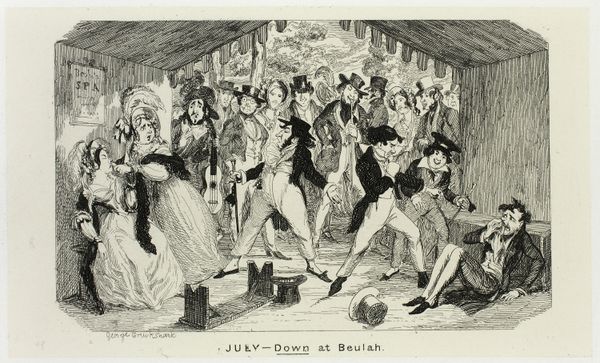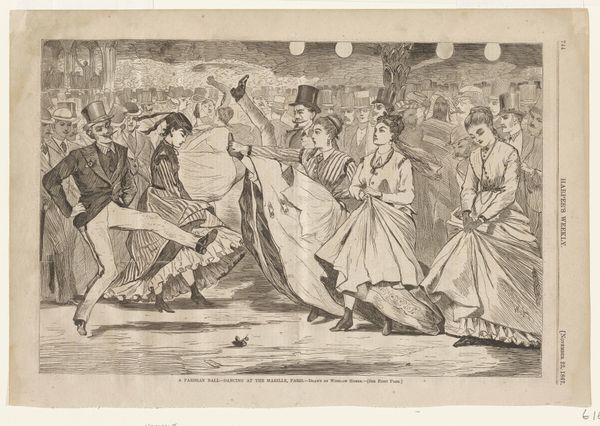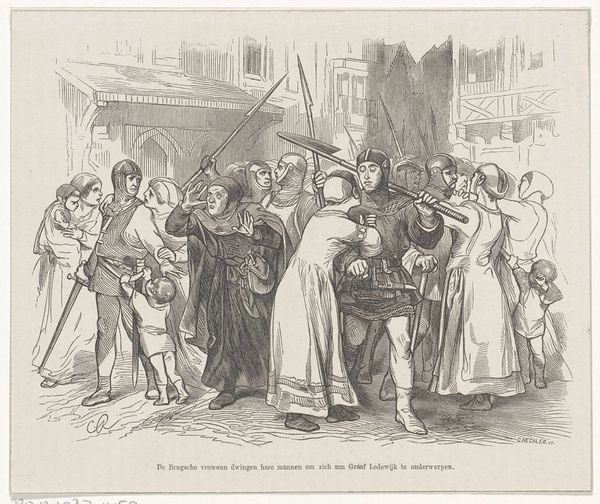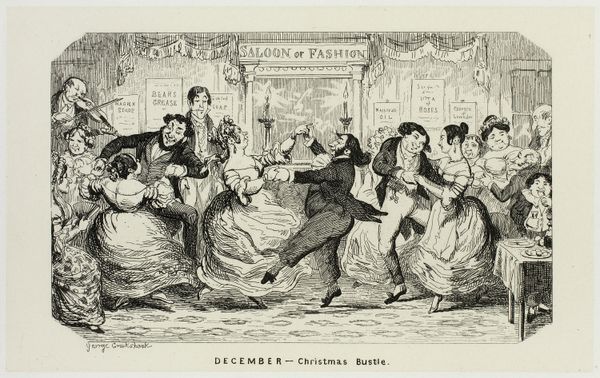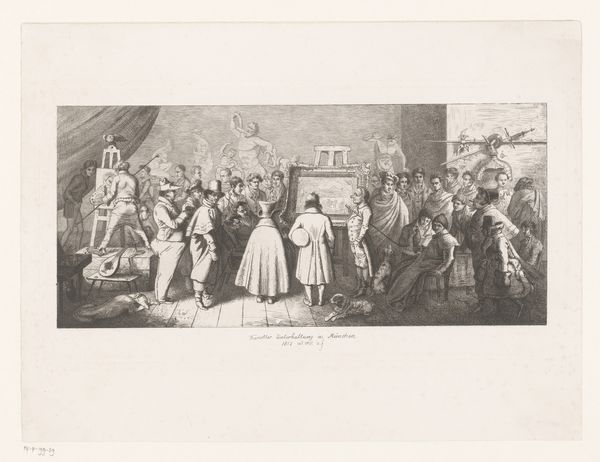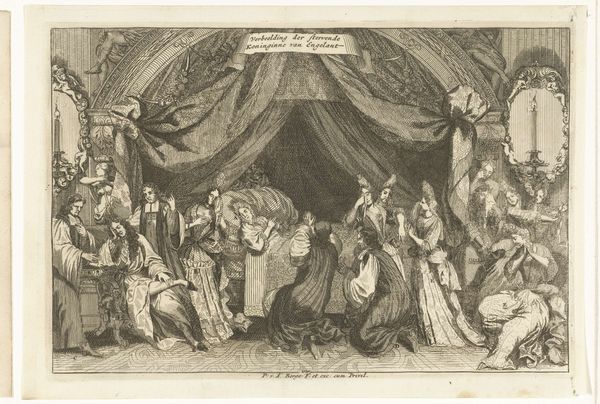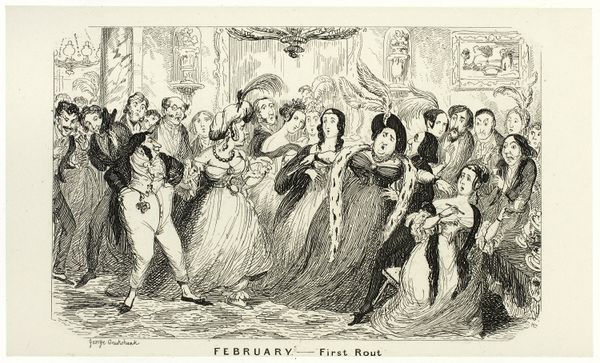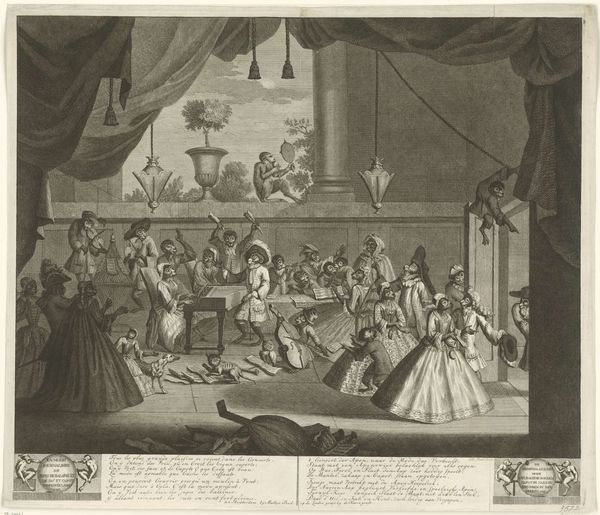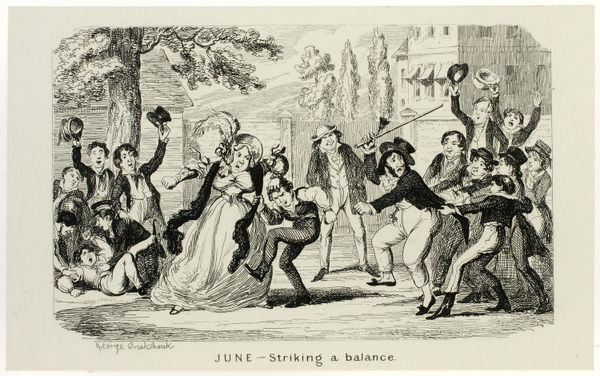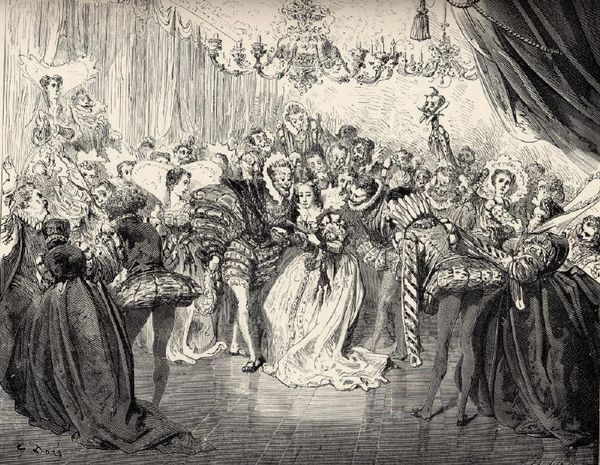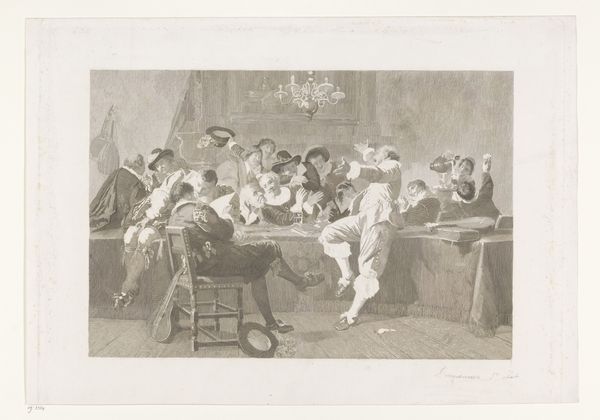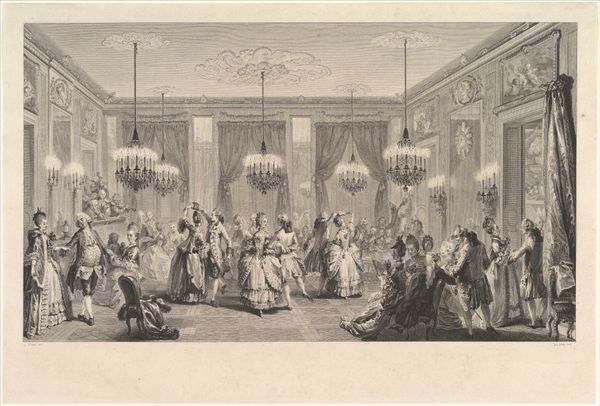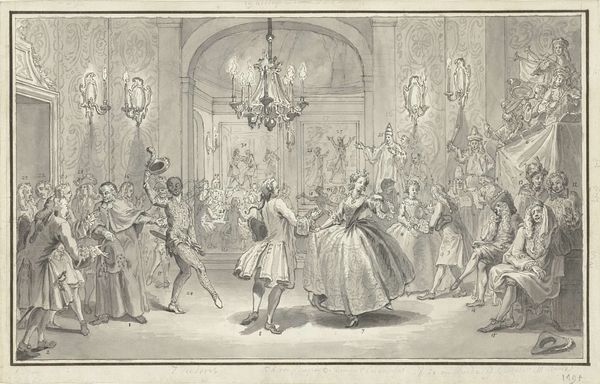
May - A New Drop Scene at the Opera from George Cruikshank's Steel Etchings to The Comic Almanacks: 1835-1853 c. 1840 - 1880
0:00
0:00
Dimensions: 93 × 154 mm (primary support); 220 × 285 mm (secondary support)
Copyright: Public Domain
Editor: Here we have "May - A New Drop Scene at the Opera from George Cruikshank's Steel Etchings to The Comic Almanacks: 1835-1853," a print and drawing created sometime between 1840 and 1880 by George Cruikshank. It's teeming with figures and looks almost like a snapshot of chaotic energy. What social commentary do you think Cruikshank might be offering here? Curator: It’s crucial to consider Cruikshank's position within the Romantic movement and his reputation as a social critic. The image satirizes the elite at the opera. Who attends the opera, and what power structures do they represent? Think about the grotesque caricatures – the exaggerated features, the almost cartoonish depictions. Editor: I see the caricatures. They seem to target the upper class; there's a person falling through the stage! Curator: Exactly! And what does it mean to depict them this way? Is it about social leveling? Is it poking fun at their perceived moral failings, or their obsession with appearances? Remember, this was a time of immense social inequality. These figures also perform different kinds of class or social status. How do clothing and setting contribute to the scene's commentary on gender, identity, or race? Editor: I see the variety of characters and their clothing; that adds context to the picture as a whole, especially within a changing historical setting. Curator: Precisely. Consider how Cruikshank uses this opera scene to critique the spectacle of wealth and the performative nature of social class. Are there details in the architecture or costumes that might allude to specific political or social events of the time? Are his satirical portrayals aligned with other reformers of the time? Editor: It's fascinating how much a seemingly simple caricature can unpack about a whole society’s values and inequalities! Curator: Absolutely, seeing art as a reflection of the society that produced it helps us engage with its messages more deeply. Considering the work from a social justice lens exposes a wealth of untold narratives.
Comments
No comments
Be the first to comment and join the conversation on the ultimate creative platform.
